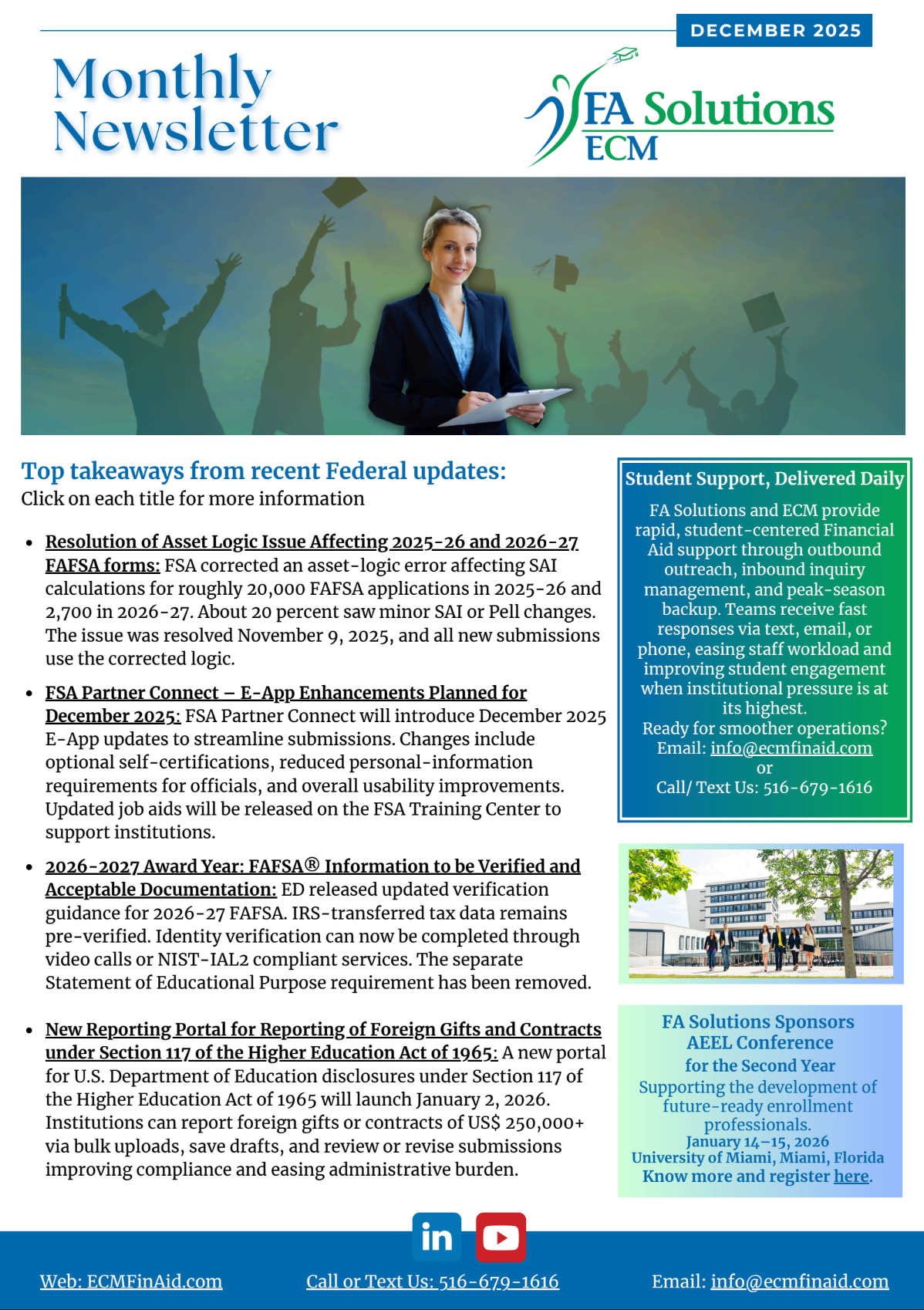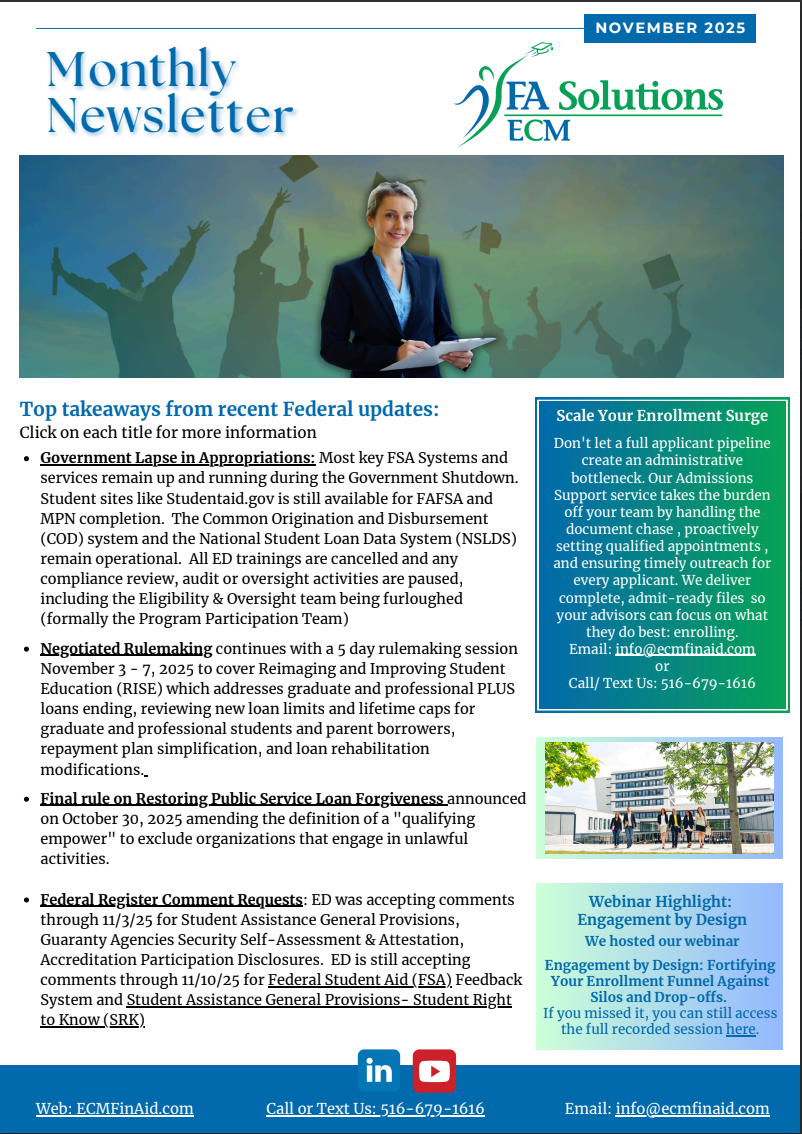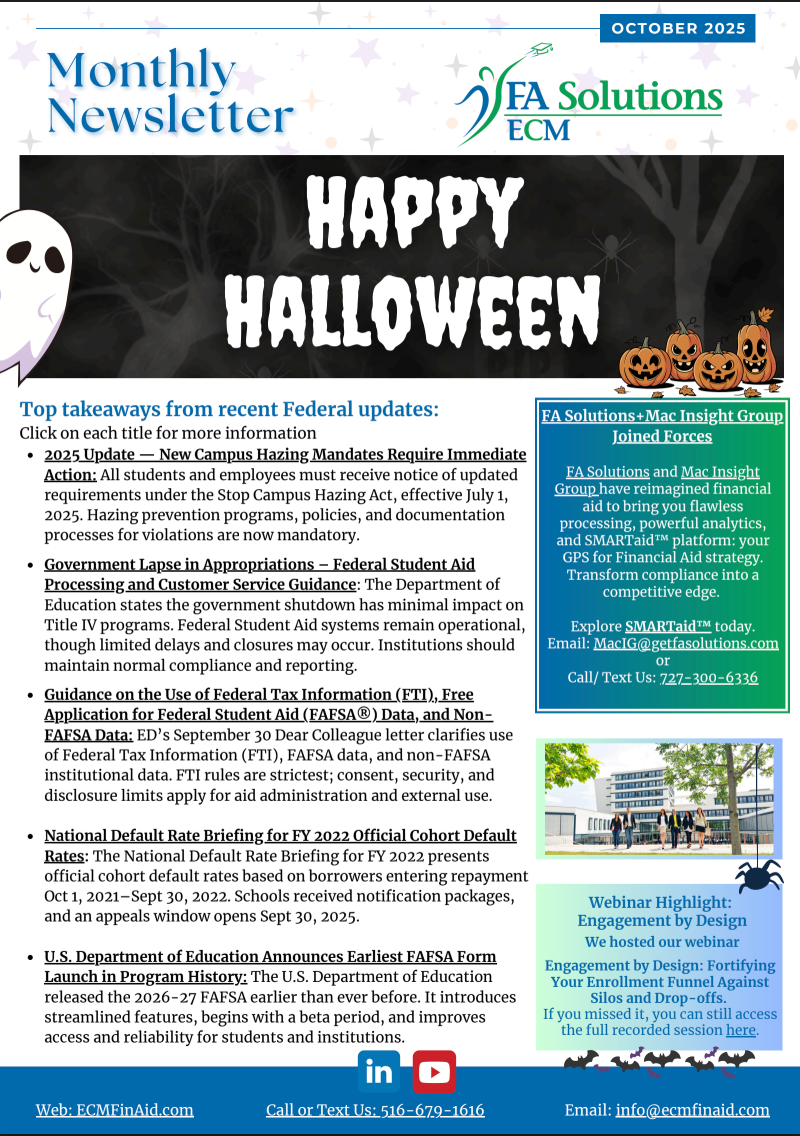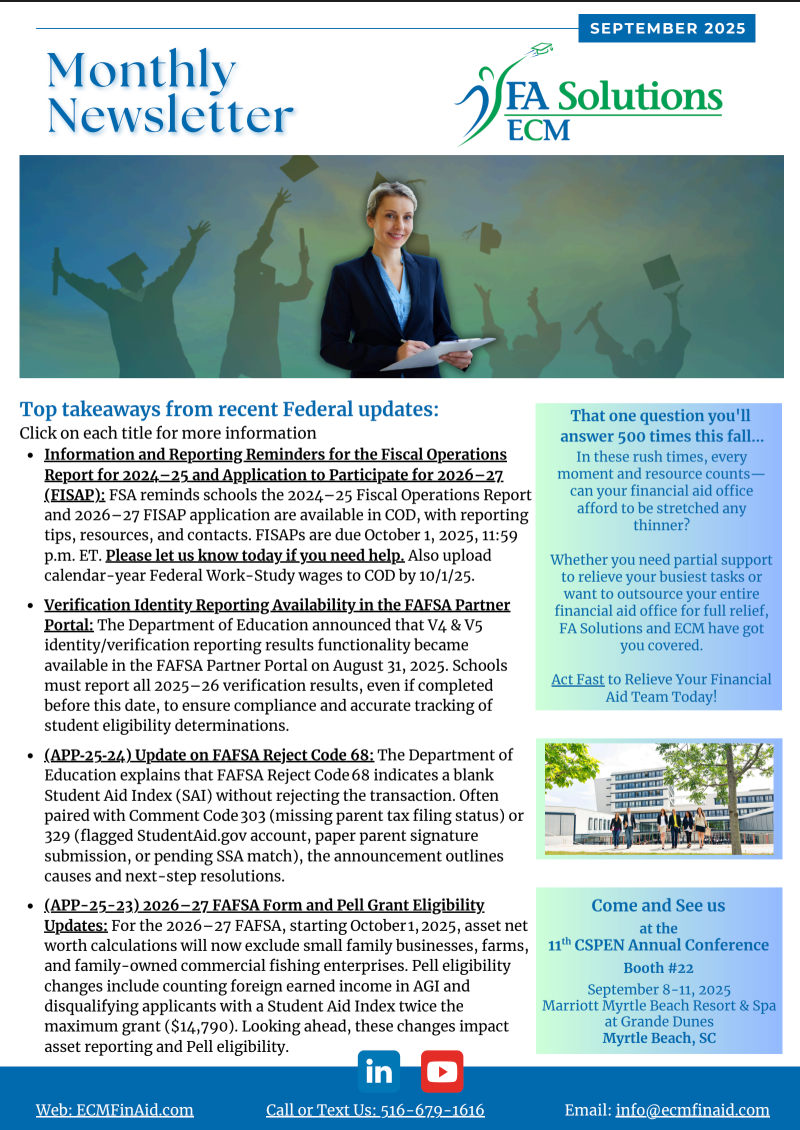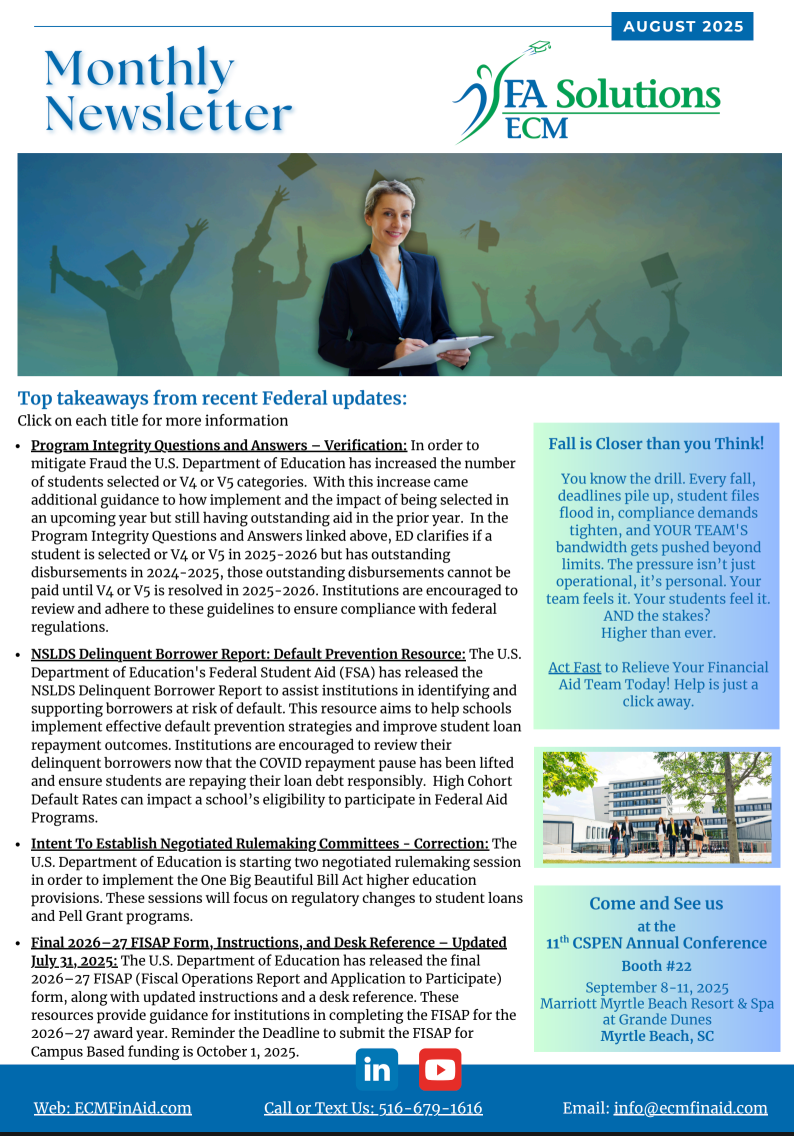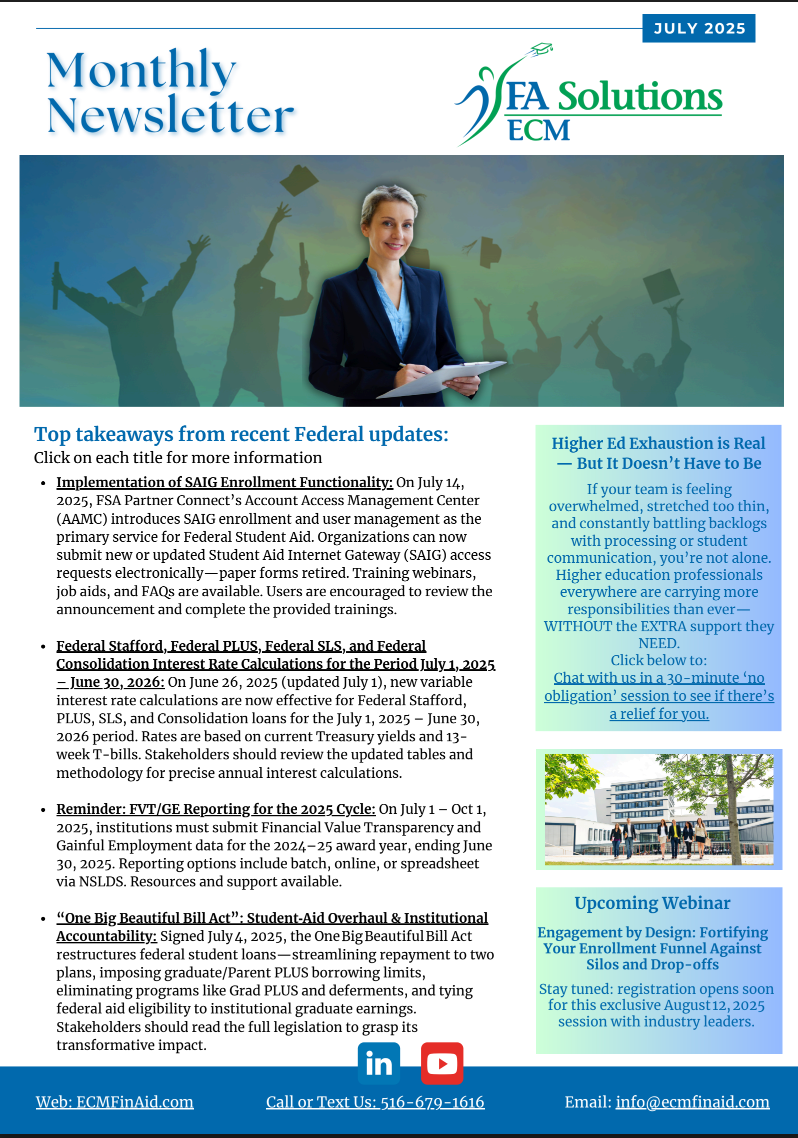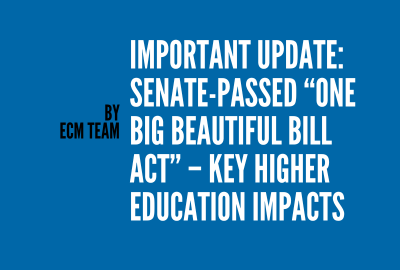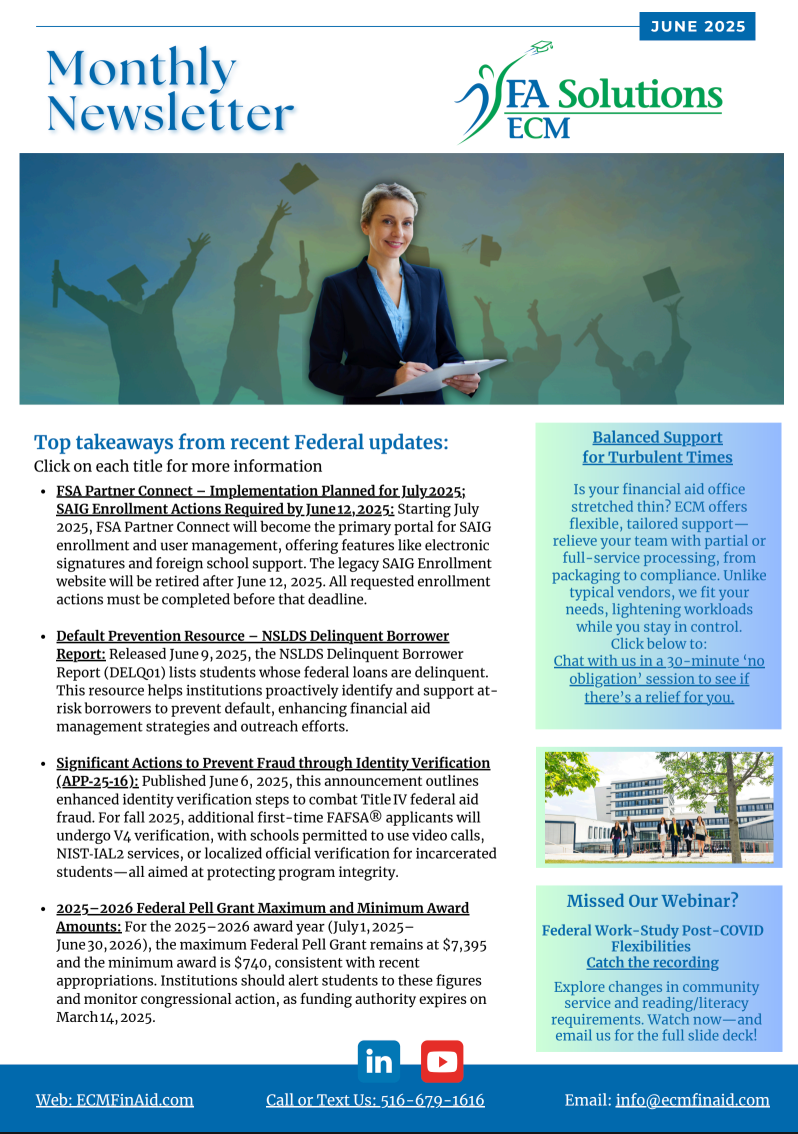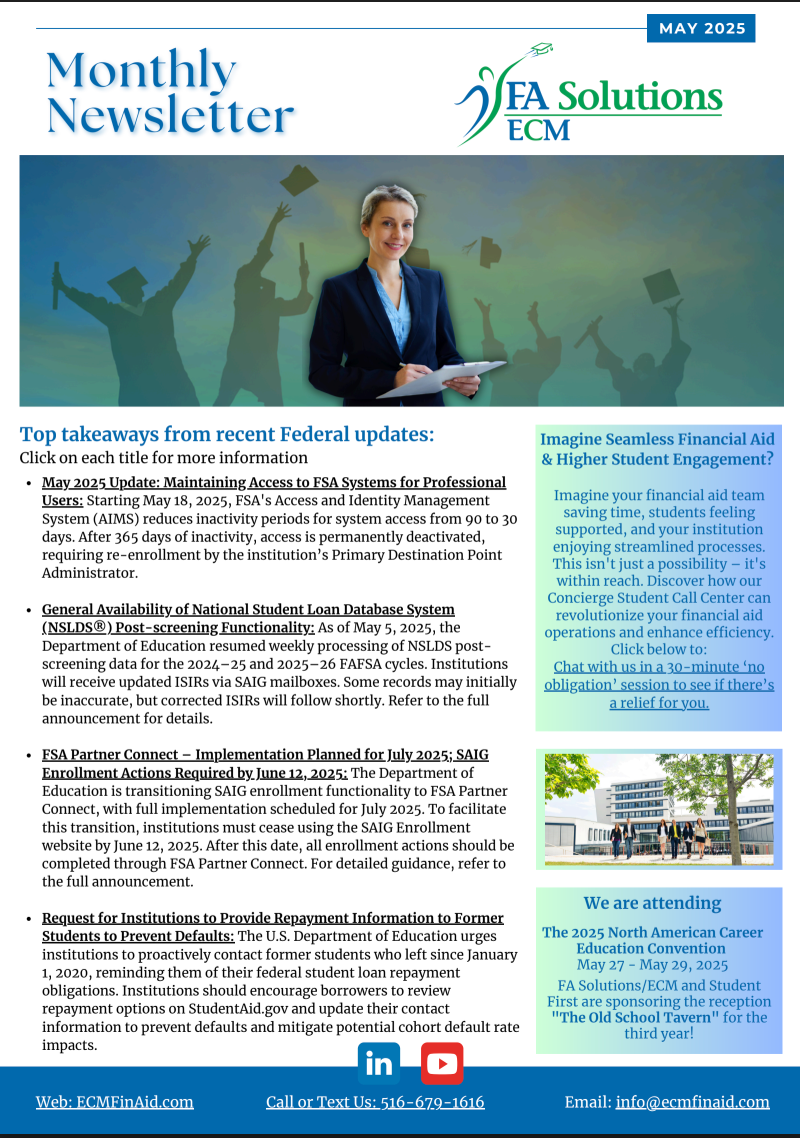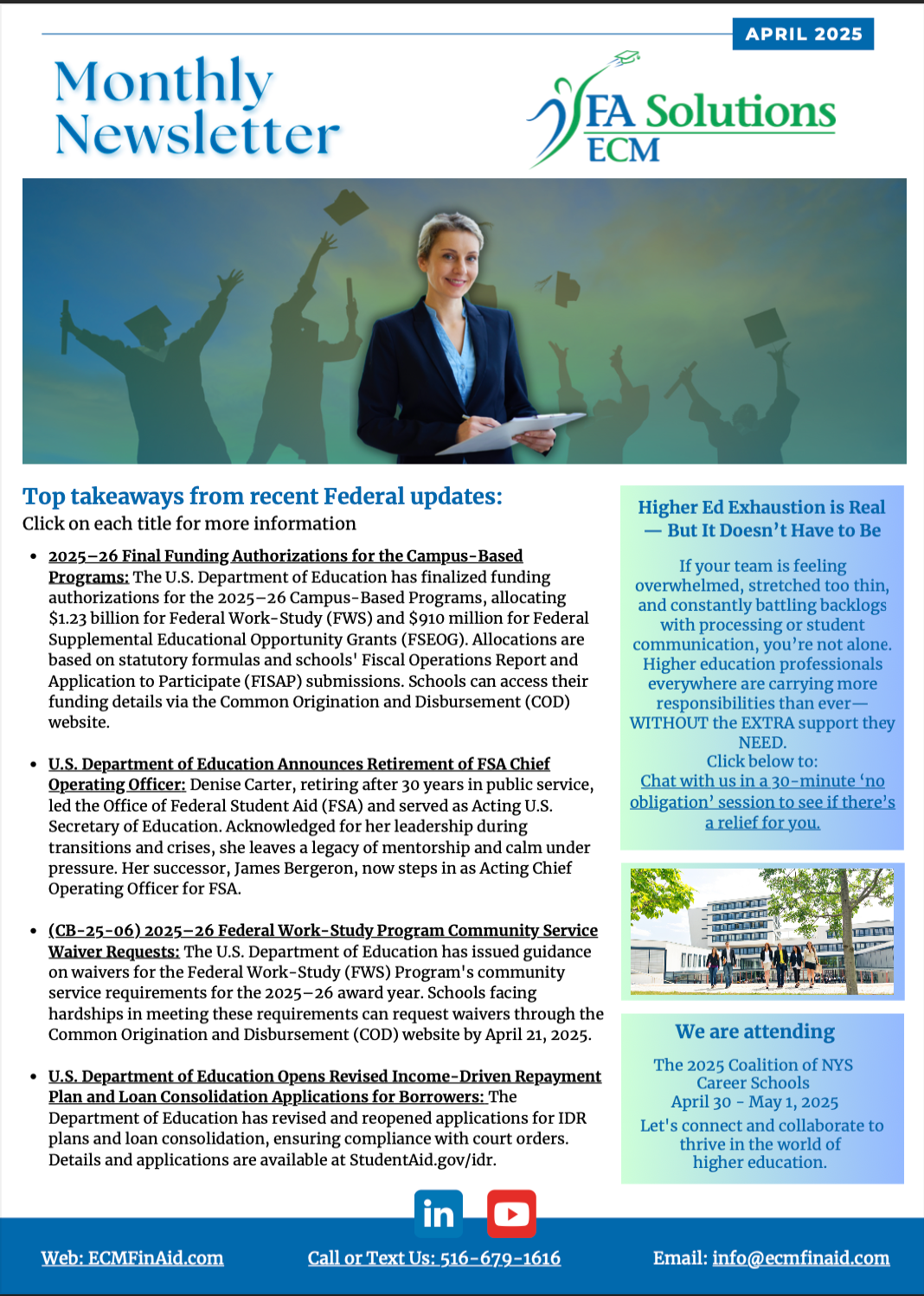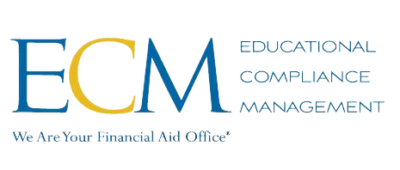The Impact of HCM2: What Financial Aid Professionals Need to Know
What is HCM2?
HCM2 (Heightened Cash Management 2) is an alternative method used for institutions to receive and disburse federal funds. When operating under this payment method, schools must credit a student’s ledger for the Title IV funds they qualify for and confirm the student received credit balances due before submitting a request to receive these funds.
What is the process of disbursing and receiving funds under HCM2?
Institutions are required to credit student ledgers and pay credit balances due using institutional funds for the Title IV awards they qualify for. They will be required to document that all eligible students received their credit balances via ACH or check cleared confirmation before requesting reimbursement. HCM2 guidelines then require institutions to submit a payment request via COD to receive a reimbursement. The school will receive a form confirming the dollar figure and types of funds requested that must be signed by the President and the user submitting the document. The school will also receive an Excel template that needs to be completed for every student they are requesting reimbursement for. The Excel spreadsheet will request the following data for each student:
⮚ Identifying information
⮚ Name of the program
⮚ Enrollment status/enrollment intensity
⮚ Admission criteria (such as high school diploma, GED, etc)
⮚ Clock/credit hours in the program
⮚ Clock/credit hours in academic year
⮚ Clock/credit hours in payment period
⮚ Clock/credit hours earned
⮚ Cost of attendance
⮚ Direct cost for the enrollment period
⮚ Percentage of tuition retained (for withdrawn students)
⮚ GPA and SAP
⮚ Student award requested
⮚ Student award amount
⮚ Credit balance information (ACH or cleared check confirmation)
A sample of students from the submission will be randomly selected by the Department of Education for further review. The school will have 48 hours to upload the completed student file for all selected students who will then be reviewed by a Department of Education analyst for approval. If all requests are approved, the amount of the payment request will be wired into the institution’s account. If errors are found by the analyst, they can approve only some of the requests or none at all, resulting in less funds being wired into the institution’s account. It is critical that financial aid professionals meticulously review all data for accuracy when submitting HCM2 payment requests to prevent errors that would result in receiving less funding.
What key facts should financial aid professionals know about HCM2?
⮚Institutions on HCM2 status cannot hold credit balances even if a student or parent/guardian gives consent.
⮚ Institutions must confirm students receive their credit balances due via ACH confirmation or cleared check confirmation before submitting a payment request. ⮚ Payment requests can only be submitted once every 30 days.
⮚ HCM2 reimbursements can take up to 30 days to be approved by a Department analyst.
⮚ Only some or none of the disbursements can be approved for reimbursement if any errors are found by the analyst.
⮚ The administration of the HCM2 process at an institution must be audited yearly.
Why might an institution be placed on HCM2?
The Department of Education places institutions on HCM2 status for various reasons to ensure compliance with federal regulations. These reasons can include:
⮚ Audit findings
⮚ Program reviews
⮚ Missed reporting deadlines
⮚ Student complaints
⮚ High cohort default rates
⮚ Action taken by a consumer protection agency
⮚ Adverse action against a school by a state authorizing agency or accreditor
⮚ Failure to comply with Title IV requirements
Working to resolve the challenges that led to an institution being placed on HCM2 and utilizing best practices can aid in an institution meeting the compliance requirements necessary to be removed from HCM2 status.
What are the best practices recommended by FA Solutions and Educational Compliance Management (ECM)?
⮚ Focus on training staff in accuracy when it comes to aid disbursement and adherence to Title IV regulations.
⮚ Continuously review and amend compliance protocols in alignment with latest federal regulations and updates.
⮚ Ensure all documents are reviewed for accuracy before creating an HCM2 submission.
⮚ Create a student file for each student before starting a submission to prepare for the 48-hour deadline to upload files for a sample review.
⮚ Develop a calendar of student disbursements that will be requested in each submission.
⮚ Maintain open communication with your assigned Department of Education analyst regarding submissions.
How can FA Solutions and ECM help my institution with the HCM2 process?
FA Solutions Brands can offer expert assistance in meeting the requirements of HCM2 processing. We offer a variety of solutions from consulting to full service processing to meet the needs of any type of institution to ensure compliance requirements are met and assist schools with navigating the workflow of HCM2 processing and submissions. Get in touch with us today to find out more about how our customizable services can support your institution.
Sources
NASFAA | New Rules for Schools under Reimbursement and Heightened Cash Monitoring Payment Methods
eCFR :: 34 CFR 668.162 -- Requesting funds.

